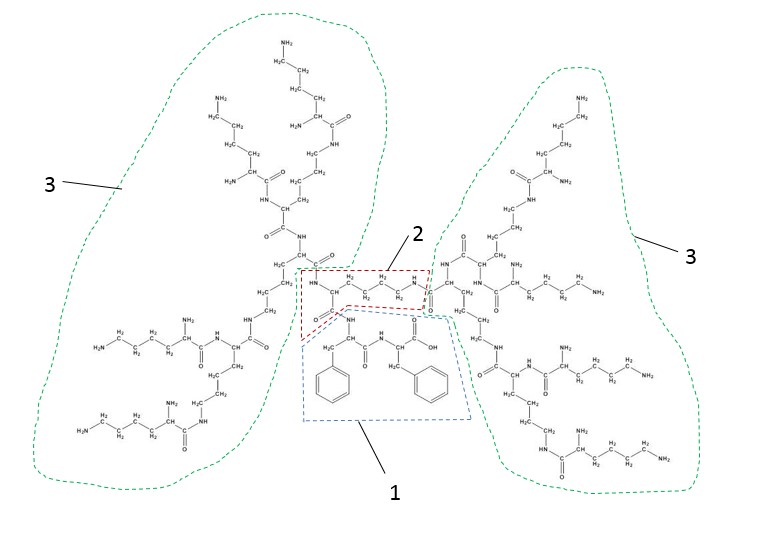Never miss an update from Javier Montiel Bonmatí
Create your free account to connect with Javier Montiel Bonmatí and thousands of other innovative organizations and professionals worldwide
The Adhesion and Adhesives Laboratory research group has developed a new biomaterial for use as adhesive or tissue sealant applicable to both animals and humans. This invention solves the disadvantages of the adhesives known so far presenting optimal properties such as biocompatibility with living tissues, high adhesive capacity, adaptable to the tissue of the wound being bond, absence of toxicity and tissue regeneration properties.
The group is looking for companies interested in acquiring this technology for commercial exploitation.
El biomaterial polimérico se genera preferiblemente in situ sobre la propia herida que se quiera cerrar, adicionando simultáneamente sobre ella una solución de un dendrón y un adhesivo de cianoacrilato, de manera que, en contacto con el agua del cuerpo o la sangre, se produce la reacción de polimerización del cianoacrilato que ancla químicamente moléculas de dendrón, formándose el biomaterial polimérico correspondiente sobre la herida a cerrar o sellar. El biomaterial polimérico se va endureciendo (proceso de curado) a medida que la reacción de polimerización transcurre, quedando al final una fina capa del mismo sobre la herida o tejido en cuestión.
Los dendrones son macromoléculas tridimensionales con muchas ramificaciones regularmente ordenadas que poseen muy baja polidispersidad y alto grado de funcionalización (véase Figura 1).

Figura 1: Estructura típica del dendrón FFG3K. La referencia (1) se refiere a la base o raíz del dendrón, la (2) al núcleo y la (3) a cada ramificación.
TECHNOLOGY ADVANTAGES
The formation of adhesive materials by cyanoacrylate polymerization to form a solid layer is known in the state of the art, but, in the present invention, the inclusion of bifunctional dendrons to cyanoacrylate-based adhesives presents important advantages:
INNOVATIVE ASPECTS OF TECHNOLOGY
The polymeric biomaterial of the present invention presents rapid curing and cross-linking, moderate heat release during curing within the range that allows its compatibility with living tissues, high adhesive capacity, good flexibility adaptable to the tissue that joins, absence of toxicity and tissue regeneration properties.
CURRENT STATE OF TECHNOLOGY
This new bioadhesive has successfully passed different physical-chemical tests in the laboratory, but there are still biocompatibility tests to be carried out on living cells of both humans and animals.
APPLICATION FIELDS
The main sectors of application will be the medical and the veterinarian sector, since this invention can be very useful in the treatment and care of wounds, in the closing of wounds by accident, in medical, cosmetic and plastic surgeries, repair of broken nails, etc.
SOUGHT-AFTER COLLABORATION
The research group is looking for Biomedical / pharmaceutical companies interested in acquiring this technology for commercial exploitation through model licensing agreements.
Ahead of the current Coronavirus outbreak, Innoget is fully committed to contributing to mobilizing scientific and expert communities to find a real solution to the Covid-19 pandemic. Therefore, we're supporting worldwide calls and programs that could help in any aspects of the coronavirus crisis.
Is your organization promoting or looking for innovation or research initiatives to mitigate the Covid-19 outbreak? Email us at covid19@innoget.com to list them.
Channeled through Innoget's online open innovation network, initiatives in the health, virology, medicine, or novel technologies applied to human health, among others, are listed and disseminated to Innoget members -ranging from hospitals, research institutes, scientists, businesses, and public administrations- and innovation partners worldwide.
Create your free account to connect with Javier Montiel Bonmatí and thousands of other innovative organizations and professionals worldwide
Send a request for information
to Javier
Technology Offers on Innoget are directly posted
and managed by its members as well as evaluation of requests for information. Innoget is the trusted open innovation and science network aimed at directly connect industry needs with professionals online.
Need help requesting additional information or have questions regarding this Technology Offer?
Contact Innoget support